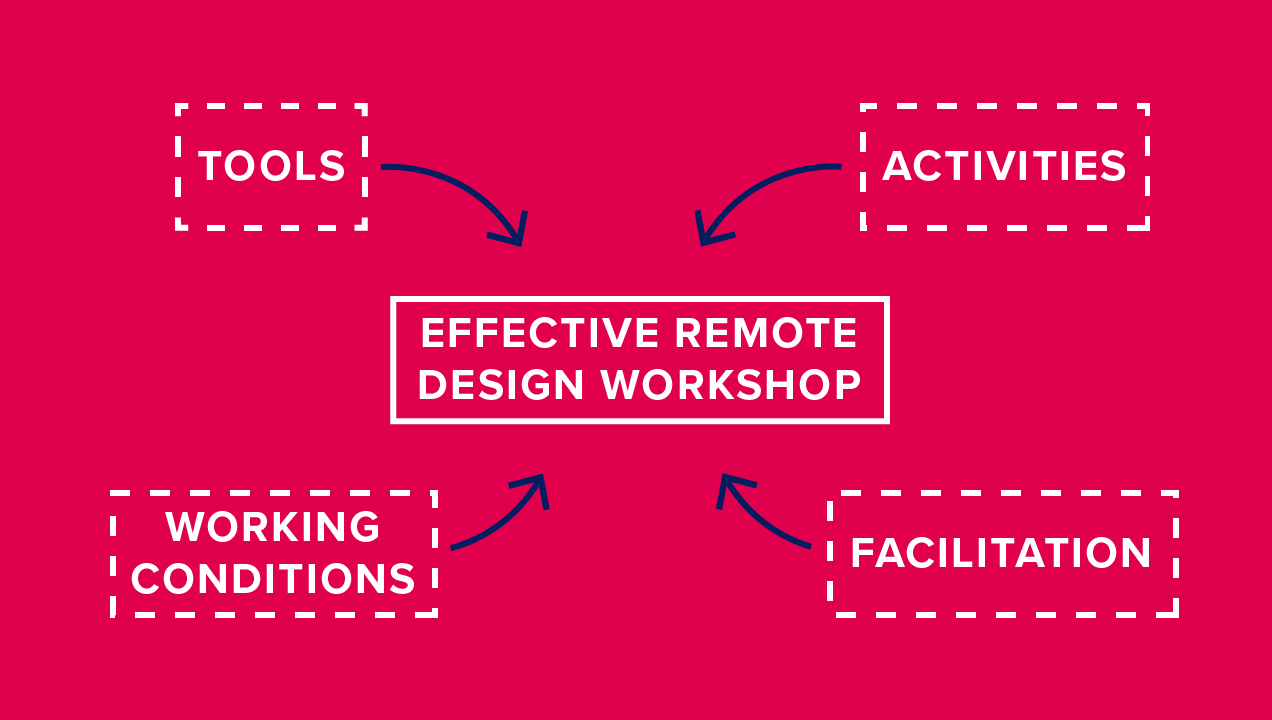Remote Design Workshops: Plan, Rehearse and Test!
In a remote working situation, how can we bring creative minds together to shape products and services? Many of our clients have been asking us questions like this in order to keep their design activities moving forward. In this 2-part post we will share some practical tips for running workshops with decentralized design teams.

All image credit: Sutherland Labs
As with any workshop you’ll need to create an agenda and think through various activities to reach your end goal. A remote workforce adds complexity when planning. You will need to also take into account the working conditions of the people that need to be involved, and the facilitation skills you will need to foster collaboration and productivity when your participants are all remote.
Every workshop will of course be unique, but here’s some tips from our experience.
Choose the right tools for the job
- If a company uses a conferencing tool already, then aim to use that. It is less likely to cause access issues and attendees will be familiar with the software.
- Test and practice with any software, especially if you’ve not used it before.
- Send out clear instructions to attendees well in advance of the session. Run a brief rehearsal session beforehand to rule out any issues and get people familiar. Provide instructions for joining the conference as well as any collaborative tools you’re using, e.g. if they need to sign up to an account beforehand.
- Allow for at least 15 minutes at the start of the workshop for any issues participants have when joining. You might need more time depending on the number of attendees and experience with the software you’re using.
- Make sure each participant confirms they can see the screen and their audio/microphone works. It may also help to familiarise them with how to mute and unmute when needed.
- Have a Plan B! Technology can fail especially when relying on lots of people with mixed tools.
- Consider what activities can be done before the workshop. Having participants present tasks to the room can be a nice way to kick things off.
Be sensitive to unique working conditions
- Think about any conflicting timezones, and work around unusual schedules.
- Avoid running on a Monday or Friday if there are pre-or-post-workshop activities you want participants to complete.
- Audio quality – as a facilitator it’s important everyone can hear you clearly. Test in advance your own laptop microphone, headset microphones, and directly dialling in to find the best quality for the call.
- Think about breaking workshops into shorter chunks of 2-3 hours to accommodate participant fatigue and any potential childcare rotas. This might mean workshops span several days, and you’ll need to consider the impacts of this:
- Encourage all attendees to attend all the slots
- If they can’t, create an easy way for them to catch up
The next step will be to consider how you’ll run the workshop – the activities you’ll use, and how to prepare for facilitation on the day, which we cover in Part 2.
In light of current events we’ve refined our remote design services to better support clients. To find out more visit our Remote Services page.
